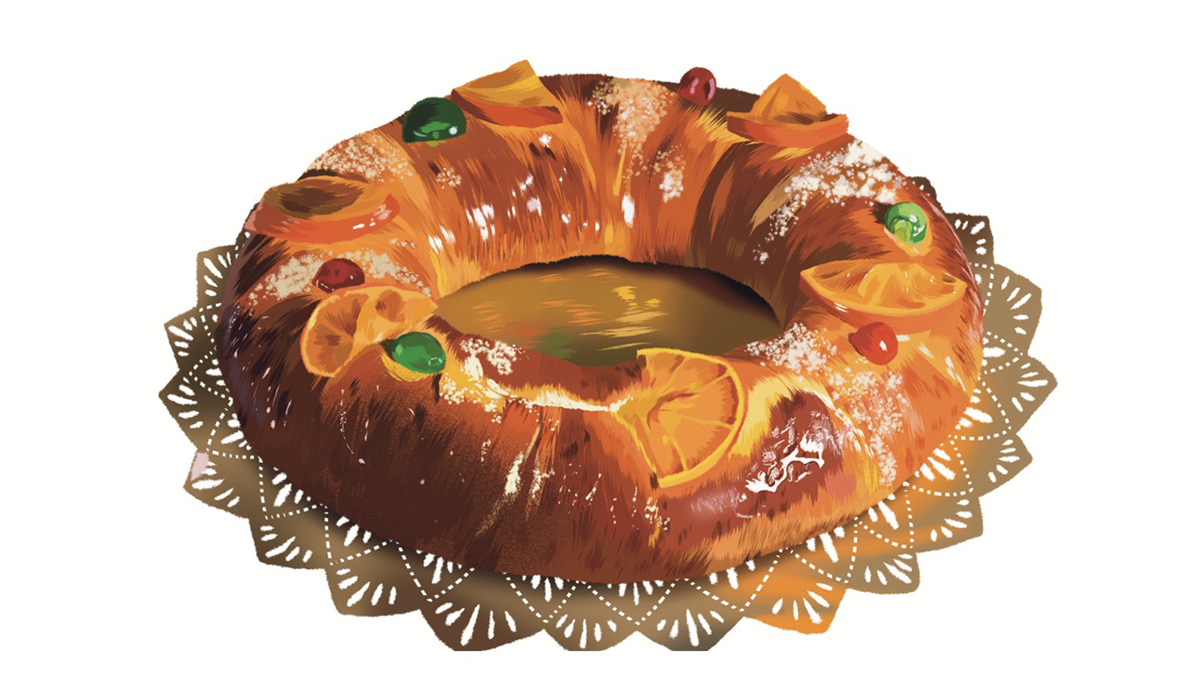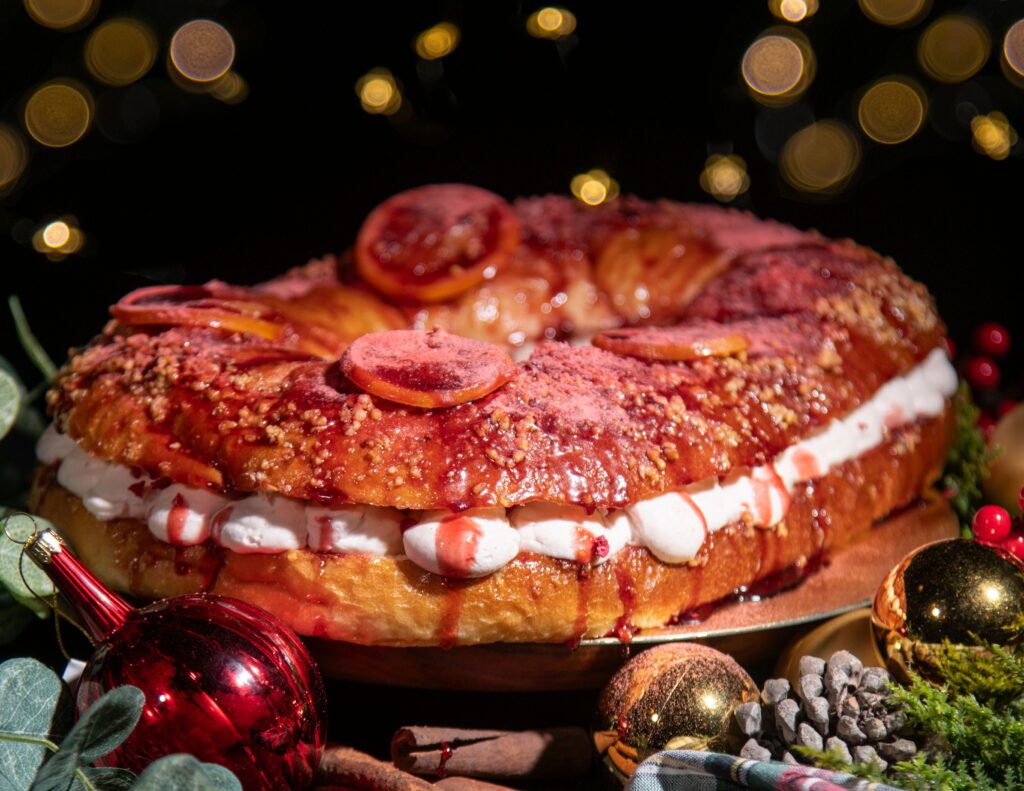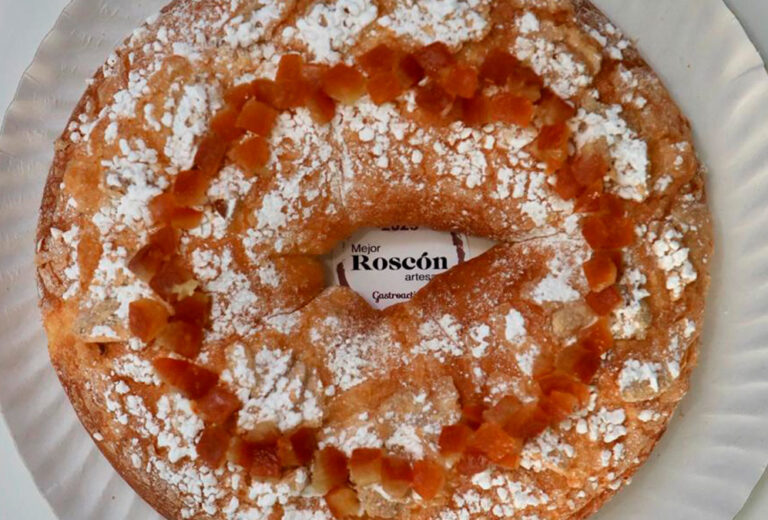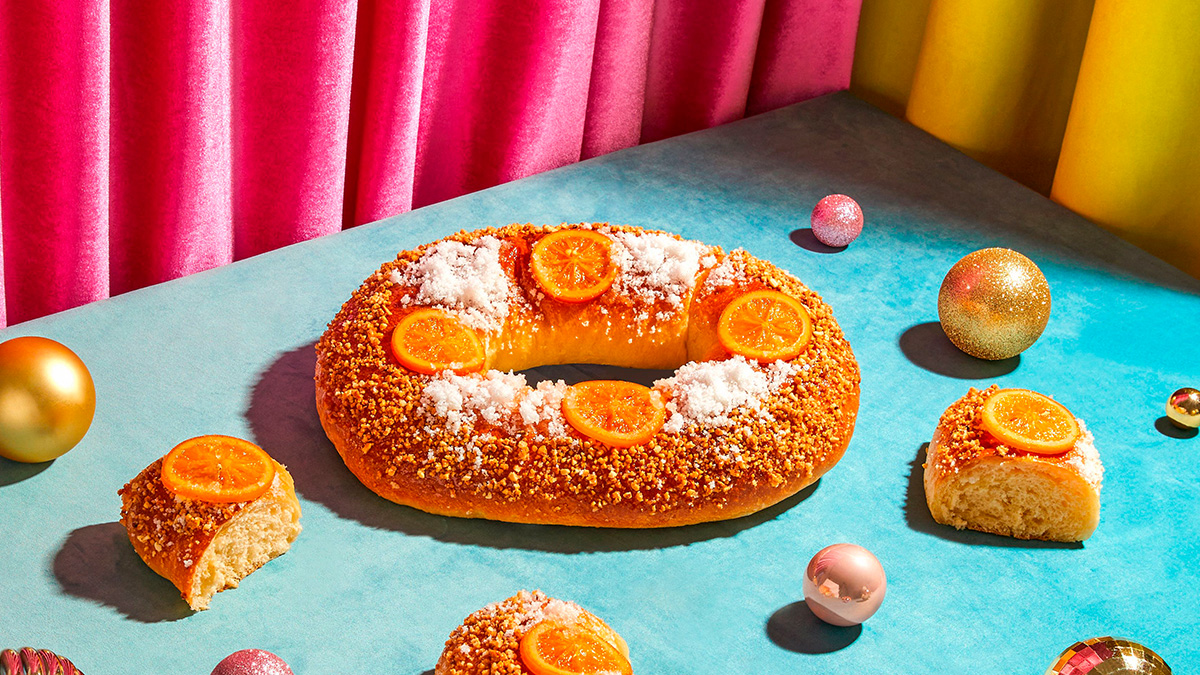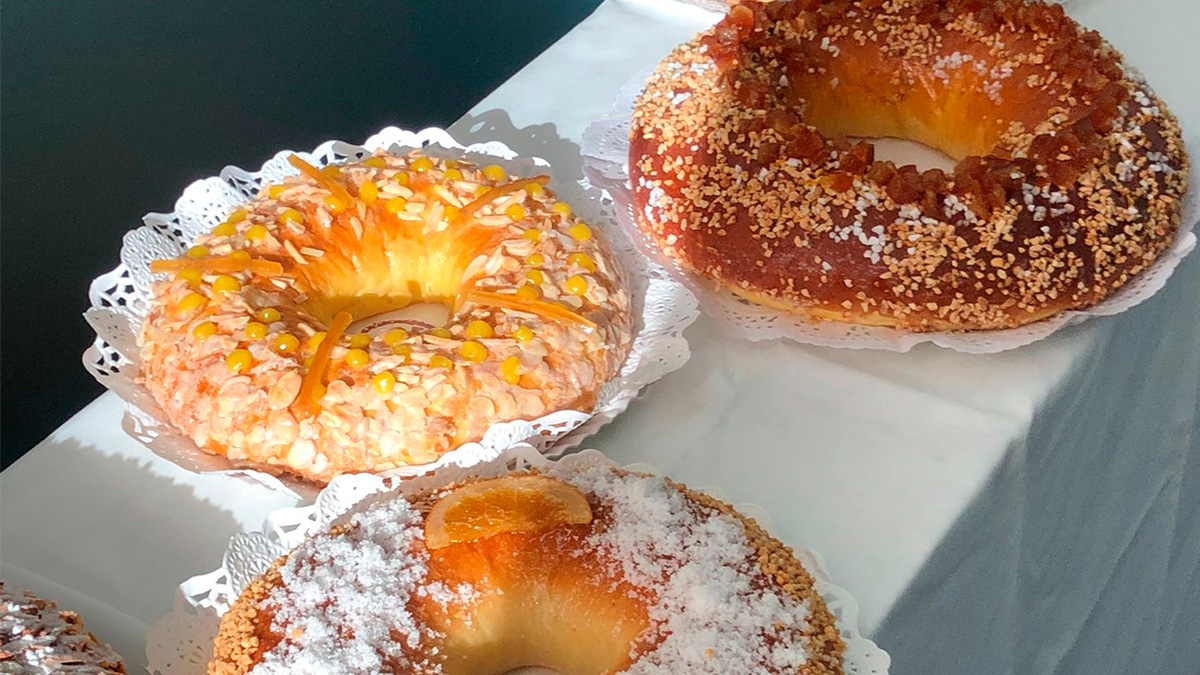Click here to read the Spanish version.
The closest thing the world ever saw to a roscón was a round cake that was handed out to commoners and slaves during the saturnal feasts of Ancient Rome. Seven orgiastic days in honour of Saturn, the god of agriculture. Work in the fields ceased, and the conclusion of winter sowing left peasants and domestic slaves time to rest. This commemorated the end of the dark period of the year and the birth of the Unconquered Sun, who conquered darkness from the winter solstice onwards. It was a riot of robes, amphorae of wine, Romans stuffed in the triclinium and women’s breasts peeping out of their stoles, as in a Cabiria-style péplum.
During the Saturnalia, such round cakes were made with figs, dates and honey. In the 3rd century the custom was introduced of putting a dried broad bean inside. Whoever found it was designated “king of the banquet” for a short period of time. The custom may have been related to the reversal of roles during the festival: social hierarchies vanished and the lords served their slaves, replacing them in their tasks and giving them extra rations of wine and food.
According to the gastronome Néstor Luján, the custom of hiding a bean inside the cake comes from a role-playing game called Basilinda, ‘the king’s game’, during which Greek children chose an ephemeral king who could appoint princes and give orders to be carried out immediately.
Christianity appropriated the Saturnalia in the form of Christmas. In the days following it, there were often excesses and irreverent performances in the temples by extravagant priests, with obscene exaltations in the presence of the people: the miter was put on an ass or drinking on the altars. This was a reminder of the fragility of the social order, as in Rome. But the Council of Trent put an end to these excesses.
From all this, in France, the roscón survived. There it took the form of today’s gâteau des rois, a ring-shaped brioche flavoured with orange blossom water and covered with sugar, which the Gauls celebrate 6 January with. French historians believe that the tradition of the brioche was established through the Avignon Papacy, the period in the history of the Catholic Church in the 14th century when seven bishops of Rome resided in the city of Avignon. The brioche was decorated with candied fruit, supposedly representing the jewels of the royal crown, although according to other versions it is a metaphor for the emeralds and rubies that adorned the capes of the Magi.
The custom of putting a bean on it was probably encouraged by Louis XV at his court, where a large donut was prepared like the ones made in honour of the Roman god Janus, with gifts inside and a dried bean, or coin, which earned the person who found it the attention and respect of his friends. The fame it acquired in France even sparked a war between bakers and confectioners for a monopoly on its sale in the 16th century. The bakers won, and their privilege was confirmed by Parliament until the 18th century.
The custom did not go down well with the superstitious, uptight pinkies of the Ancien Régime, who saw the roscon as a source of subversion and drunkenness. They were not misguided: during the Revolution, when the aristocracy was beheaded on the scaffold, the king’s feast became the feast of the sansculottes, and delinquent confectioners were even prosecuted.
In the 18th century, perhaps coinciding with the arrival of the Bourbons on the Spanish throne, the custom of celebrating Epiphany with a cake with a gift inside came to Spain. The roscón took a long time to take root: in January 1848, El Heraldo de Madrid reported on the custom that had been observed in different European countries “since time immemorial”, every year on the first 15 days of January: “Several families or friends usually get together to eat a large sponge cake called torta de reyes (cake of kings). An almond is put into the cake, which is divided into as many pieces as there are people at the meeting, and the one whose turn it is to eat the almond is called king or queen’ and paid for the snack.
Twenty years later, the press was still explaining to its readers what the tradition of the Three Kings cake was all about. At first, it was a French and Frenchified custom. In 1887, the monarchist evening paper La época reported that the Duchess de la Torre would distribute the Epiphany cake among her guests. At the turn of the century, the working classes had to make do with the Easter cake, which was displayed in the windows of second-rate patisseries and confectioners, because the popular pastry was not lucky enough to appear “like its aristocratic companion” the torta de Reyes, with its corresponding coscorrón, in the fashionable patisseries where the crème and highlife of Madrid were to be found. The roscón would still take some time to acquire the undeniable popular character that it has today. But little by little it would gradually make its way into Spanish homes to welcome the Three Wise Men from the East.

